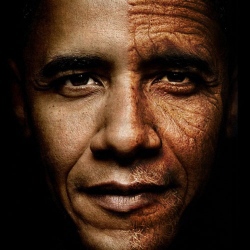
Genome-wide association study identifies genetic variants that contribute to healthy facial traits. Many of the characteristics that make up a person’s face, such as nose size and face width, stem from specific genetic variations, reports John Shaffer of the University of Pittsburgh in Pennsylvania, and colleagues.
Several lines of evidence suggest that a person’s facial shape is controlled by one’s genes, but scientists don’t yet understand how genetic variation contributes to the range of healthy shapes and sizes that human faces take. To identify these variants, scientists performed a genome-wide association study.
They looked for associations between 20 facial characteristics measured from 3D images of 3,118 healthy individuals with European ancestry and almost one million single base pair variations called SNPs, located across the genome. Facial width, the distance between the eyes, the size of the nose and the distance between the lips and eyes all had statistically significant associations with certain SNPs. Their analysis also considered results from two earlier genome-wide association studies and confirmed certain previous findings.
Corresponding author, Dr Seth Weinberg says "Our analysis identified several genetic associations with facial features not previously described in earlier genome-wide studies. What is exciting is that many of these associations involve chromosomal regions harboring genes with known craniofacial function. Such findings can provide insights into the role genes play in the formation of the face and improve our understanding of the causal factors leading to certain craniofacial birth defects."
Several of the genetic regions contributing to face shape detected by the researchers contain genes known to play a role in facial development and facial abnormalities. In the future, the scientists hope to identify genetic risk factors that lead to anomalies such as cleft lip and palate.
It is important to keep in mind that these findings likely represent only a small fraction of the genes influencing the size and shape of the human face. Because many of the genes influencing facial morphology are likely to have small effects, successfully mapping a large number of these genes will require much greater sample sizes and a more comprehensive approach to quantifying facial features of interest."
